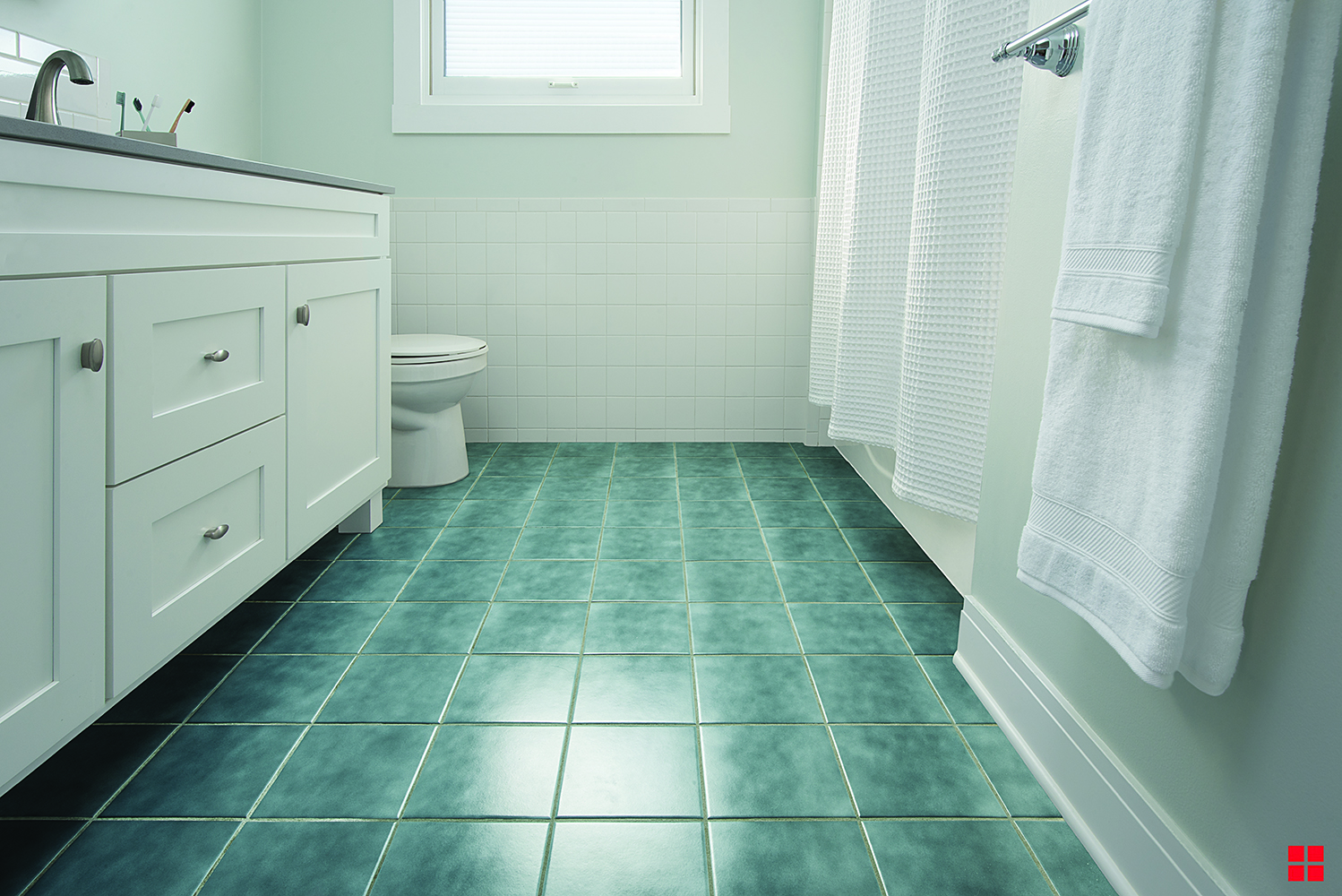Concrete bathroom floor paint is an increasingly popular choice for those looking to enhance the aesthetics and functionality of their bathroom floors. Let’s discuss the benefits of concrete bathroom floor paint, the types of paint available, the preparation and application process, maintenance tips, and common mistakes to avoid. Additionally, it will address frequently asked questions to provide a thorough understanding of concrete bathroom floor paint.

Benefits of Concrete Bathroom Floor Paint
Durability and Longevity
Concrete bathroom floor paint offers excellent durability and longevity. Unlike other flooring materials, painted concrete can withstand heavy foot traffic, water exposure, and other wear and tear typically encountered in a bathroom. High-quality concrete paints are designed to bond tightly with the concrete surface, creating a robust and resilient layer that can last for many years with proper maintenance. This durability makes it an excellent investment for homeowners looking to enhance their bathroom floors without the need for frequent replacements.
Aesthetic Appeal
One of the primary reasons homeowners choose concrete floor paint is its aesthetic versatility. Concrete paints are available in a wide range of colors and finishes, allowing for creative and personalized designs that can complement any bathroom decor. From sleek, modern looks with glossy finishes to rustic or industrial styles with matte or textured finishes, concrete paint can be tailored to fit various design preferences. Additionally, decorative techniques such as stenciling, stamping, and faux finishing can be applied to create unique patterns and effects.
Cost-Effectiveness
Compared to other flooring options like tiles, hardwood, or vinyl, concrete bathroom floor paint is relatively inexpensive. The cost of materials and labor for painting concrete floors is generally lower, making it a budget-friendly option for bathroom renovations. Moreover, the long-lasting nature of concrete paint means fewer costs associated with maintenance and replacement over time. This cost-effectiveness makes it an attractive option for homeowners looking to achieve a high-end look without breaking the bank.
Moisture Resistance
Bathrooms are prone to moisture and water exposure, which can lead to mold, mildew, and other issues if not properly managed. Concrete floor paint provides a moisture-resistant barrier that helps protect the underlying concrete from water damage. Many concrete paints are formulated with water-resistant properties that prevent moisture penetration, reducing the risk of mold growth and prolonging the life of the bathroom floor. This moisture resistance is particularly beneficial in high-humidity environments like bathrooms.
Easy Maintenance
Maintaining a painted concrete bathroom floor is relatively straightforward. The smooth, sealed surface of the paint makes it easy to clean and resistant to staining. Regular sweeping and mopping with mild cleaners are typically sufficient to keep the floor looking its best. Additionally, concrete paint is less likely to harbor dust, dirt, and allergens, contributing to a cleaner and healthier bathroom environment. The ease of maintenance is a significant advantage for busy homeowners looking for a low-maintenance flooring solution.
Types of Concrete Bathroom Floor Paint
Epoxy Paint
Epoxy paint is one of the most popular choices for concrete bathroom floors due to its exceptional durability and resistance to water, chemicals, and abrasions. Epoxy paint is a two-part system consisting of a resin and a hardener that, when mixed, creates a strong and resilient coating. This type of paint provides a glossy, high-shine finish that enhances the aesthetic appeal of the bathroom floor. Epoxy paint is also available in various colors and can be customized with decorative chips or metallic additives for added visual interest.
Latex Paint
Latex paint is another common option for concrete floors, known for its ease of application and quick drying times. Unlike epoxy paint, latex paint is a single-component system that can be applied directly to the concrete surface without mixing. While not as durable as epoxy, latex paint still offers good water resistance and is available in a wide range of colors and finishes. Latex paint is often chosen for DIY projects due to its user-friendly nature and versatility in achieving different looks.
Acrylic Paint
Acrylic paint is a versatile option for concrete bathroom floors, offering a balance between durability and ease of use. Acrylic paints are water-based and provide good adhesion to concrete surfaces, creating a durable and moisture-resistant finish. They are available in various finishes, from matte to high-gloss, and can be tinted to match any color scheme. Acrylic paint is also known for its flexibility, which helps it resist cracking and peeling over time, making it suitable for areas with temperature fluctuations and moisture exposure.
Urethane Paint
Urethane paint, also known as polyurethane paint, is another durable option for concrete bathroom floors. This type of paint forms a tough, protective layer that is highly resistant to water, chemicals, and abrasions. Urethane paint is available in both water-based and solvent-based formulations, with water-based options being more environmentally friendly. The high gloss finish of urethane paint adds a sleek, polished look to the bathroom floor, while its durability ensures long-lasting performance.
Decorative Concrete Stains
While not technically a paint, decorative concrete stains are worth mentioning as an alternative for enhancing concrete bathroom floors. Concrete stains penetrate the surface of the concrete, creating a permanent color that won’t peel or chip. Stains come in various colors and can be used to create natural, variegated patterns that mimic the look of stone or marble. Decorative stains are often sealed with a protective topcoat to enhance their durability and water resistance, making them suitable for bathroom applications.
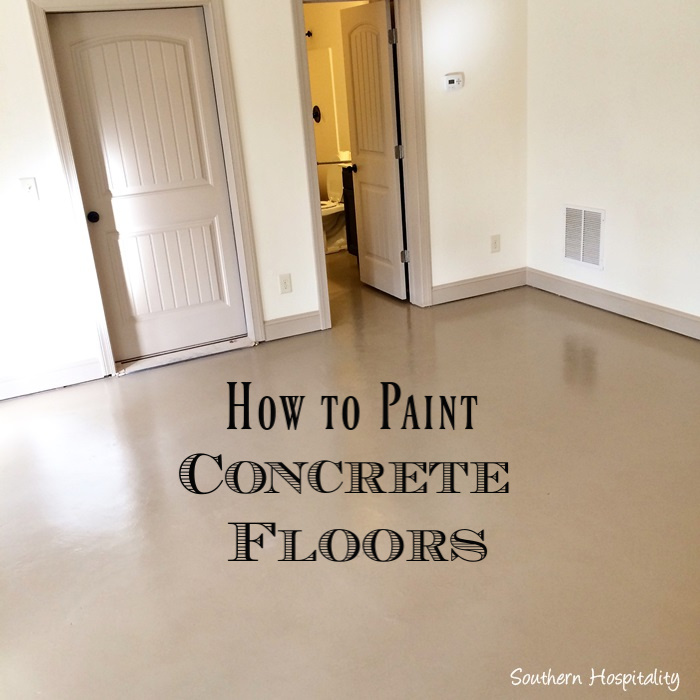
Preparation and Application Process
Surface Preparation
Proper surface preparation is crucial for achieving a successful and long-lasting paint job on concrete bathroom floors. Begin by thoroughly cleaning the floor to remove any dirt, dust, grease, or other contaminants. Use a degreaser and a stiff brush to scrub the surface, followed by rinsing with clean water. Allow the floor to dry completely before proceeding with any further preparation steps.
Repairing Cracks and Imperfections
Inspect the concrete floor for any cracks, holes, or imperfections that need to be addressed before painting. Use a concrete patching compound to fill in any gaps or cracks, smoothing the surface with a putty knife. Allow the patching compound to dry and cure according to the manufacturer’s instructions. Sand the patched areas to ensure a smooth and even surface, and vacuum up any dust or debris.
Etching the Surface
Etching the concrete surface is an important step to ensure proper adhesion of the paint. Use a concrete etching solution to open up the pores of the concrete, creating a rougher texture that allows the paint to bond effectively. Follow the manufacturer’s instructions for applying and rinsing the etching solution. After etching, allow the floor to dry completely before moving on to the next step.
Applying Primer
Applying a primer is essential for achieving a durable and long-lasting paint job. Choose a primer specifically designed for concrete surfaces and apply it evenly using a roller or brush. The primer helps to seal the concrete, providing a smooth and uniform base for the paint. Allow the primer to dry completely according to the manufacturer’s instructions before applying the paint.
Painting the Floor
Once the primer is dry, it’s time to apply the concrete floor paint. Mix the paint thoroughly according to the manufacturer’s instructions. Use a high-quality roller or brush to apply the paint in thin, even coats, working in small sections to ensure full coverage. Allow each coat to dry completely before applying additional coats. Depending on the type of paint and desired finish, multiple coats may be necessary to achieve the best results. After the final coat is applied, allow the paint to cure fully before using the bathroom.

Maintenance Tips
Regular Cleaning
Maintaining a clean painted concrete bathroom floor is essential for preserving its appearance and longevity. Sweep or vacuum the floor regularly to remove dust and debris. Use a damp mop with a mild, pH-neutral cleaner specifically designed for painted concrete surfaces. Avoid using harsh chemicals or abrasive cleaners that can damage the paint. Wipe up any spills immediately to prevent staining and water damage.
Protecting the Surface
Protecting the surface of the painted concrete floor can help prolong its lifespan and maintain its aesthetic appeal. Place mats or rugs in high-traffic areas and near sinks or bathtubs to catch water and prevent wear. Use furniture pads under heavy objects to avoid scratches and dents. Avoid dragging heavy items across the floor, as this can cause damage to the painted surface.
Addressing Wear and Tear
Over time, painted concrete floors may show signs of wear and tear, such as scuffs, scratches, or chips. Address these issues promptly to prevent further damage. Touch up small areas with the same paint used initially, following the same preparation and application steps. For larger areas or extensive damage, consider repainting the entire floor to ensure a uniform and refreshed appearance.
Sealing the Floor
Applying a sealer to the painted concrete floor can provide an additional layer of protection against moisture, stains, and abrasions. Choose a sealer compatible with the type of paint used and apply it according to the manufacturer’s instructions. Sealing the floor periodically helps to maintain its durability and aesthetic appeal, ensuring long-lasting performance.
Routine Inspections
Conduct routine inspections of the painted concrete floor to identify any issues that need to be addressed. Look for signs of wear, damage, or moisture infiltration, and take corrective action as needed. Regular inspections and maintenance help to keep the floor in optimal condition, prolonging its lifespan and preserving its visual appeal.
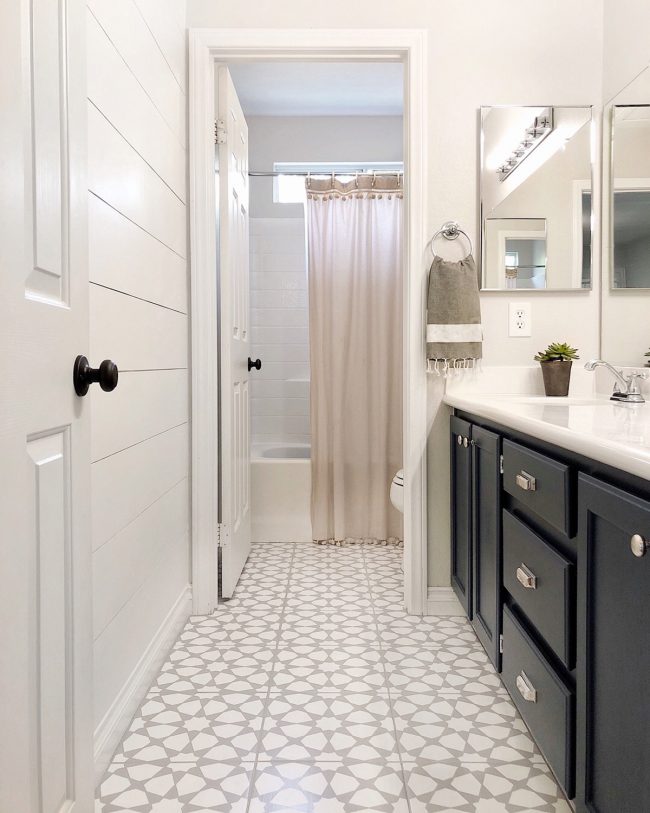
How to Paint Concrete Floors HomeWithStefani

Painted Concrete Floors, Concrete Floor Paint; Tutorial u0026 Videos
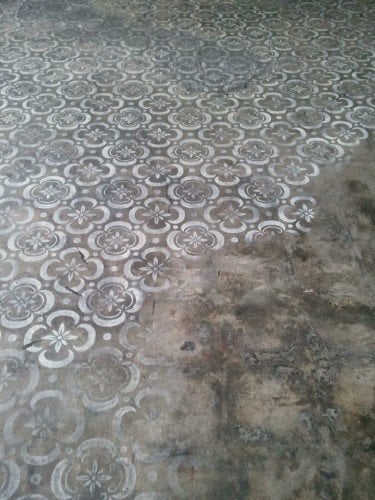
How To Paint A Bathroom Floor To Look Like Cement Tile (For Under
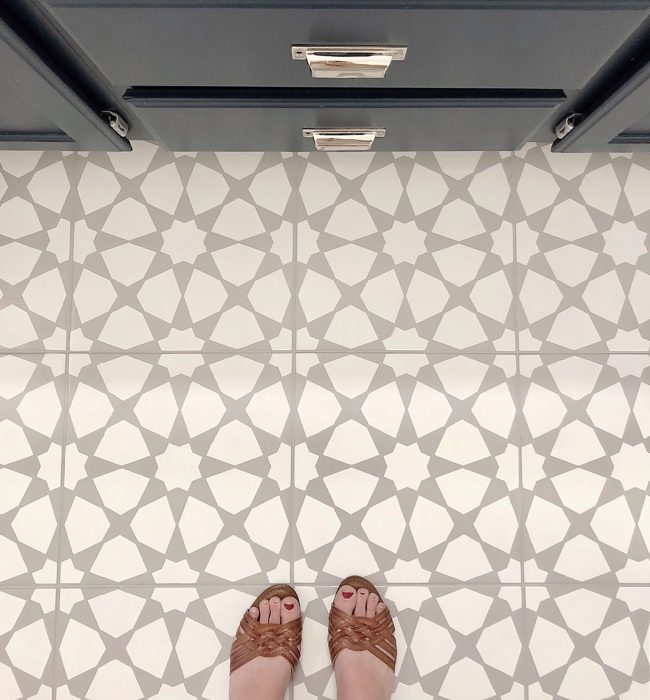
Chalk Paint Stenciled Concrete Floor – Modern on Monticello

Concrete Floor Diy Floor Paint Concrete Bathroom Floor Diy With

How to paint concrete floors – DIY makeover

Related articles:
